IČ:25396331
DIČ:CZ25396331
Tel:+420 596 232 101
Fax:+420 596 232 213
GSM:+420 602 710 631
E-mail:
mmgroup@mmgroup.cz
obchod@mmgroup.cz
mmgroup@volny.cz
The principle of intrinsic safety equipment lies in limitation of the amount of electric energy supplied to electric circuits from powered source and energy accumulated into parts of electric circuits. Taking safety measures therefore lies in correct installation, systematic selection of components and in their correct structural layout. Intrinsic safety is basically technology of small energy input, which is not usable for power devices, but is sufficient for industrial and instrumental technology designated for monitoring and data collection in environment that is in danger of explosion of gases, vapours and dust.

Category representatives - Ex i
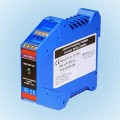
Intrinsically safe power supply is designed to supply intrinsically safe equipment located in explosive hazardous areas. Devices do not have any other input and output circuits, or they have them ensured in another way. In this case it must be ensured that the total energy on that interface does not exceed the maximum allowed power for the device.
These facts are based on applicable standards in particular EN 60079-0 and 60079 - 11. The maximum values of each device are shown in certificates of intrinsically safety.
A typical example of incorrect use of intrinsically safe source is e.g. current loop 4-20 mA (pressure sensors, temperature, etc.). And direct connection of its output to processing device that is not certified for intrinsically safe circuits. For this application it is necessary to use an insulator - barrier - isolating amplifier. For example, type MM 5041 .. Zener barrier or MM 7087 + etc.
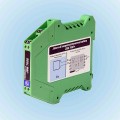
Intrinsically safe zener barriers series MM 7... are the simplest type of intrinsically safe interface designed to protect electrical circuits installed in potentially hazardous areas. Intrinsically safe barrier series MM 7... is being used as an interface between the intrinsically safe circuits and circuits that are not intrinsically safe. For this function it is necessary to ground the barrier. Intrinsically safe barrier series MM 7... is therefore equipped with additional grounding clip, which is located in the mounting holes for DIN35 rail that provides a simple, fast and very reliable connection to a grounded circuit.
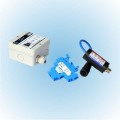
Surge protection – barriers to protect electrical low voltage equipment due to surge overvoltage generated in the management indirect effect, lightning or before overvoltage,which occurs on running his own iduction. Surge barrier type PB protects electronic circuits against overvoltage over 28V. Given that the barriers are passive quadripole and their costruction meets the requirements for explosion-proof equipment is possible with their help protect and intrinsically safe equipment to level II 1G [ia] IIC. Barrier itself may also be installed in potentially explosive atmospheres "Zone 2" or "Zone 1 and Zone 0" if it is a barrier free of elements accumulating energy. Surge barrier type PB.. according to design is placed in a plastic box and encapsulated in sealing compound (IP 20) or is placed in a box with IP 54 (IP 65) for outdoor use.
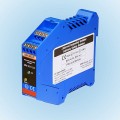
Intrinsically safe relay – NAMUR intrinsically safe transducers or isolators of binary signal are a basic type of intrinsically safe interface designed to protect electrical circuits installed in potentially hazardous areas. They include electronic components ensuring galvanic isolation of input, output and supply circuits. Mainly are used optocouplers, safety relays, elements with magnetic bind, all in a special desing according to ČSN EN 60079. The input (or output) circuits, whose clamps are connected to wires leading to an hazardous area, are also equipped with protective diode blocks (including Zener diodes) in combination with fuses and resistors. Diodes limit the voltage applied to the intrinsically safe circuit and defect-free limiting resistors limit the maximum current that can flow through the circuit. Intrinsically safe isolators are used as an interface between the intrinsically safe circuits and circuits that are not intrinsically safe. They are made for separation of binary circuits and analog circuits, or only as a source of as an intrinsically safe power without ability to transfer signals.
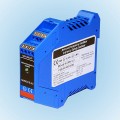
Intrinsically safe isolation amplifiers are an elemental type of intrinsically safe interface designed to protect electrical circuits with analog input or output located in potentially hazardous areas. They include electronic components ensuring galvanic isolation of input, output and supply circuits. Optocouplers are used with a magnetic coupling, all in a special design according to ČSN EN 60079. The input (or output) circuits, whose clamps are connected to wires leading to hazardous area are also equipped with protective diode blocks (including Zener diodes) in combination with fuses and resistors. Diodes limit the voltage applied to the intrinsically safe circuit and defect-free constraint resistors,maximum current that can flow through the circuit. Are used as an interface between the intrinsically safe circuits and circuits that are not intrinsically safe.
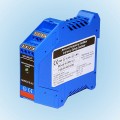
Comparative switching unit type MM 50.. is switching separated output relays or eventually open transistor collector, depending on the input signal level. The unit is equipped with power supply that powers input terminals for connection of sensors for non-electrical quantities (pressure, temperature, pH, etc.). Programming the level of comparison is done by switching micro-switches on the head unit. The units are available as single-channel (1x contact output) or dual-channel (2x contact output) with one passive or active input. The unit is placed in a plastic box with mounting on DIN 35 rail
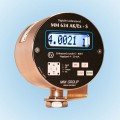
Intrinsically safe LCD and LED displays are designed to display the current measured value in potentially hazardous area. Variability of the device allows the measurement and processing of any input range in any dependence on the input variable. LCD and LED displays can be made in panel or outdoor variant. LCD display units are powered directly by current loop 4-20mA of intrinsically safe circuit and require no additional power supply. It is a device without an additional energy source with zero internal inductance and minimal capacity. Devices may be connected into the intrinsically safe loop circuit without requiring any additional certification. LED display units are powered from intrinsically safe source and are designed as an pass-through device for intrinsically safe current loop. This is not a passive device and requires certification for use in potentially hazardous areas.
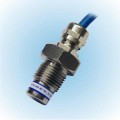
Thermal switch (bimetal thermometers) are universally attachable devices. Areas of application are for example at monitoring, control and signalling temperature in the refrigeration in compressors, motors, bearings, etc.. If the value of the switching point is reached, switch is opened. thermal switch can also be used as a temperature controller.
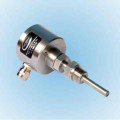
Intrinsically safe temperature sensors type "TI" are designed to measure temperatures in cistern, pipelines, tanks with the air, etc. The measured medium may be flammable liquid or gas of explosive character. The temperature is converted to electrical signal using resistive article – sensors Ni1000 or Pt 100. Temperature sensors may be equipped with electronics in the body that converts the sensor values into unified electric signal 4-20mA or 0-5/10V. Power is provided from the current loop 4-20mA (two-conductor). Sensor with voltage output as three-conductor. Sensors including electronics are classified as intrinsically safe II 1G Ex ia IIC T4 and IM1Ex ia I
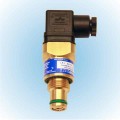
Ex Pressure switches
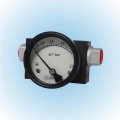
The differential piston barometers with contacts – HIRLEKAR Precision. Measuring difference of pressure is one of the most challenging of the tasks you may meet in the field of measuring and controlling technology. The following devices allows switching the contact when required difference is reached. In case of contact barometers there is a system for continuous measurement of pressure in liquids a gases. This is purely mechanical device equipped with switching contacts for detecting maximum or minimum measured values.
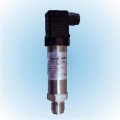
The pressure is converted into an electrical signal using the membrane detector. It consists of a silicon plate, separated from the medium membrane with stainless steel. Movement of the membrane caused by pressure is transferred to a silicon plate, which is changing resistance due to deflection. Resistance change is converted into an electrical signal and are evaluated.
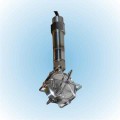
Hydrostatic pressure is converted into an electrical signal by the membrane sensor. It consists of a silicon plate, separated from the fluid by membrane made of stainless steel. Movement of the membrane caused by pressure is transferred to the silicon plate, which changes resistance. Resistance change is converted into an electrical signal that is evaluated. Body of the converter is made of stainless steel, cable sheath is either PVC, silicone or teflon according to chemical composition of the measured medium.
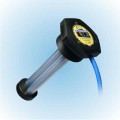
Intrinsically safe capacity and conductivity sensors are used in many applications where it is necessary to switch at limit levels or where it is needed to continuously scan level. Area of application of these devices is relatively wide and is located wherever you can not use the principle of measuring the hydrostatic pressure. These are substances with high density, bulk materials, aggressive compounds, oils, solvents, paints, fluids with interface of two different substances and this interface is required to indicate, eventually substances with excessive heat. Also, application of these sensors appear to be more economical option compared to conventional tenzometers. The advantage of conductivity versus capacitive sensors is their independence from the measured conductivity of the substance. The sensors are designed as one or two electrode. Sensor with one electrode is using wall containers, pipes, etc. made of metal as a second electrode. When using containers of non-conductive material is necessary to use a sensor with two electrodes.
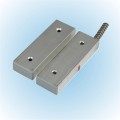
Magnetic position sensors are contact free sensors of position. These are mainly suitable for evaluating status of doors or safety covers in hazardous area. Metal contact is switching in dependence of position of the coded magnet. The switch is powered by safety barrier - intrinsically safe relay.